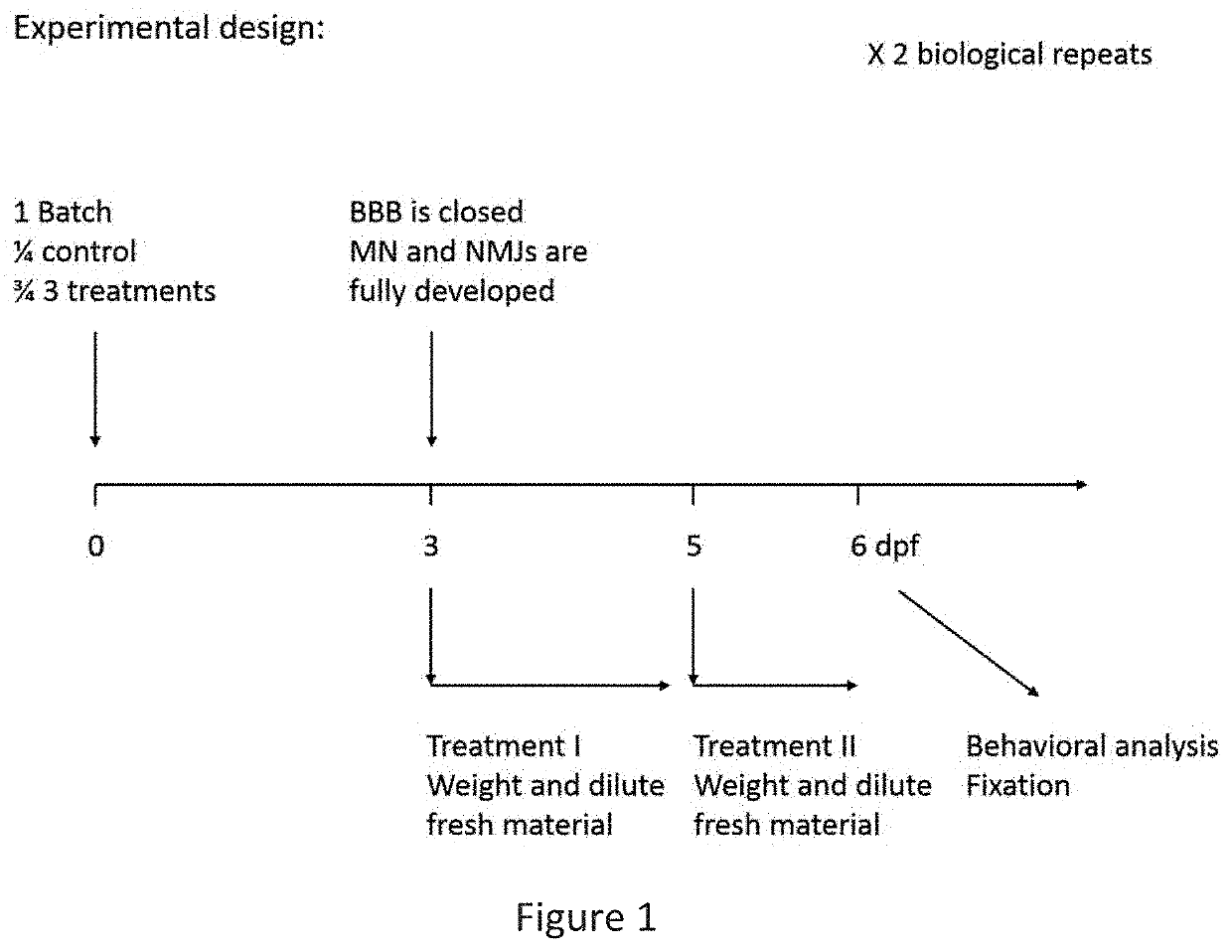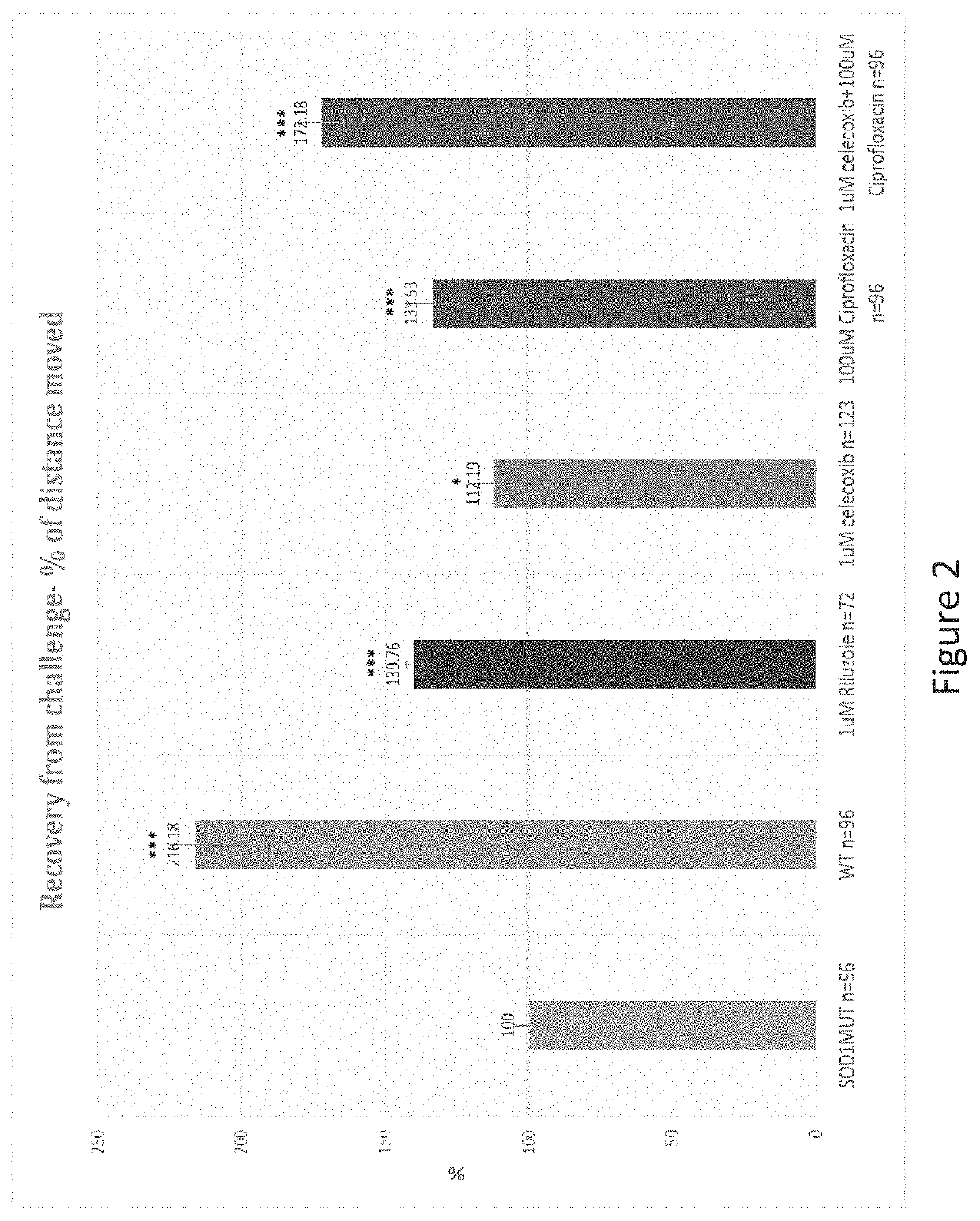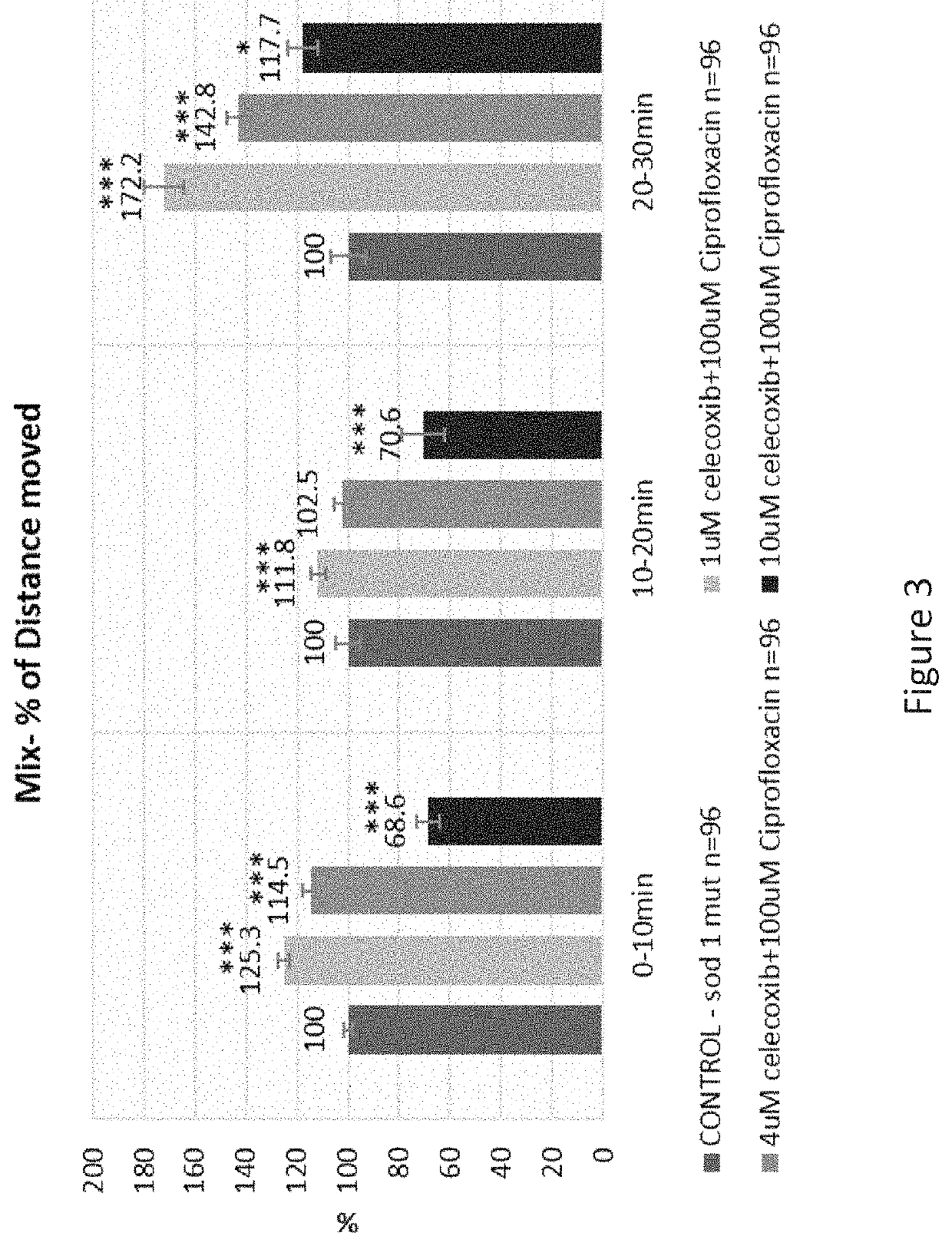Methods and compositions of anti-inflammatory drug and dicer activator for treatment of neuronal diseases
a neuronal disease and anti-inflammatory technology, applied in the field of neuronal clinical indications, can solve the problems of rudimentary understanding of the underlying mechanism, clinical trial did not find a protective effect of the selective cox-2 inhibitor celecoxib on als disease progression, etc., and achieve the effect of facilitating the activation of the rna-induced silencing complex (risc)
- Summary
- Abstract
- Description
- Claims
- Application Information
AI Technical Summary
Benefits of technology
Problems solved by technology
Method used
Image
Examples
example 1
[0143]Transgenic zebrafish for the top ALS-linked gene superoxide dismutase 1 (SOD1) were utilized in this study. It was previously shown that the SOD1 G93R mutant fish recapitulate the major phenotypes of ALS including neuromuscular junction defects, decreased endurance, motor neurons loss and muscle pathology, see Ramesh T, Lyon A N, Pineda R H, et al. A genetic model of amyotrophic lateral sclerosis in zebrafish displays phenotypic hallmarks of motoneuron disease. Disease models &mechanisms 2010; 3:652-62, incorporated herein as reference. SOD1 mutation caused behavioral deficits related to locomotion. The SOD1 mutant animals showed significant reduction in their swimming ability compared to the wild type during the spontaneous swimming, light / dark challenge and most dramatically following the second peak of stress, exhibiting recovery from the challenge (FIGS. 5-7). The distance the wild type larva moved was averaged for the whole period of time and was elevated by 44% compared ...
example 2
[0153]a. Methodology
[0154]Fish—Adult and larval zebrafish (Danio rerio) were maintained at the Russek-Blum laboratory's fish facility (Dead Sea & Arava Science Center; Yair station, Central Arava) at 28.5° C. and bred according to established procedures25. Animal protocols were approved by the Ben Gurion University Committee on Use and Care of Animals. Tg(sod1:sod1G93R or WT; hsp70:DsRed) transgenic lines were used in this study, see Ramesh T, Lyon A N, Pineda R H, et al. A genetic model of amyotrophic lateral sclerosis in zebrafsh displays phenotypic hallmarks of motoneuron disease. Disease models &mechanisms 2010; 3:652-62, incorporated herein as a reference. To generate zebrafish expressing transgenic mutant Sod1, a zebrafish genomic region containing the endogenous sod1 promoter and sod1 gene was used. Sod1 was mutated by changing glycine 93 to arginine (G93R); this mutation affects a conserved amino acid that is often mutated in familial ALS, see Orrell R, de Belleroche J, Mark...
example 3
[0230]Autism A common strategy in establishing connection specificity of the nervous system is for neurons to develop exuberant axonal and dendritic processes, followed by selective pruning of a subset of processes. For example, long-distance projection neurons from layer V of the mammalian cortex send axon branches to both the spinal cord and the superior colliculus during an early stage of development. Later in development, motor cortical neurons selectively prune their branches to the superior colliculus, whereas visual cortical neurons selectively prune their branches to the spinal cord. Axon pruning is widely used for the refinement of neural circuits in both vertebrates and invertebrates, and may also contribute to the pathogenesis of neurodegenerative diseases, see Watts, R. J., Hoopfer, E. D., & Luo, L. (2003). Axon pruning during Drosophila metamorphosis: evidence for local degeneration and requirement of the ubiquitin-proteasome system. Neuron, 38(6), 871-885, incorporated...
PUM
| Property | Measurement | Unit |
|---|---|---|
| pH | aaaaa | aaaaa |
| pH | aaaaa | aaaaa |
| compositions | aaaaa | aaaaa |
Abstract
Description
Claims
Application Information
 Login to View More
Login to View More - R&D
- Intellectual Property
- Life Sciences
- Materials
- Tech Scout
- Unparalleled Data Quality
- Higher Quality Content
- 60% Fewer Hallucinations
Browse by: Latest US Patents, China's latest patents, Technical Efficacy Thesaurus, Application Domain, Technology Topic, Popular Technical Reports.
© 2025 PatSnap. All rights reserved.Legal|Privacy policy|Modern Slavery Act Transparency Statement|Sitemap|About US| Contact US: help@patsnap.com



